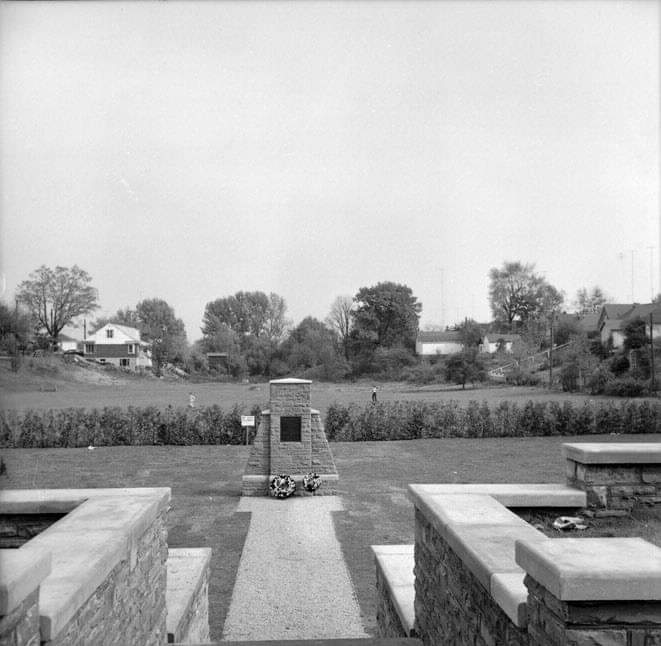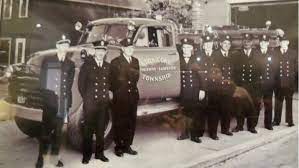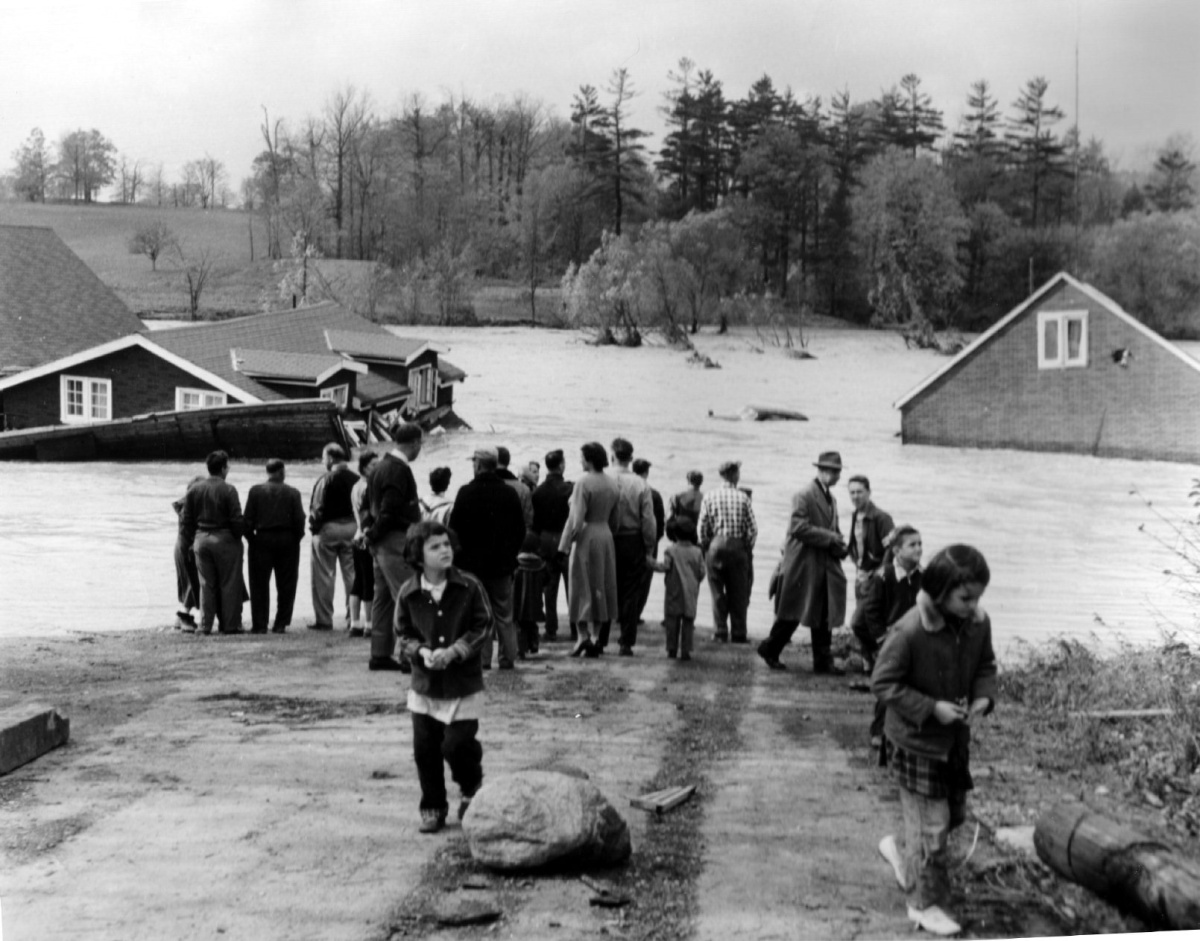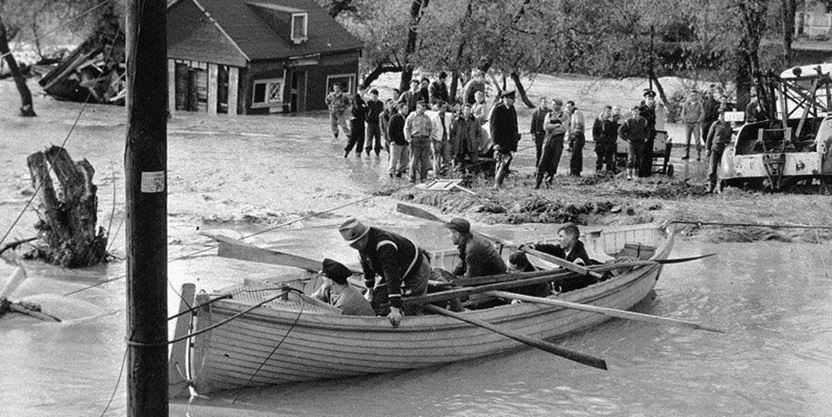Prayers were said to honour five firefighters from the former Kingsway-Lambton Fire Station who were killed 67 years this week while rescuing residents in Hurricane Hazel, one of the worst storms to hit Canada.
The brave men were killed as they went to rescue people stranded in a car by floodwaters on the Humber River. The fire truck the men were driving became stuck on a flooded street and overturned, tossing the men into the raging water.

MEMORIAL for the five firefighters who gave their lives helping others in Hurricane Haze. Etobicoke Historical Society.
Five of the nine men on board died. We remember and pay tribute to Angus Small, Dave Palmateer, Frank Mercer, Tiny Clarence Collins and Roy Oliver. Marsh Palmateer, Jack Philips, Jim Britton and Bill Bell survived.
Hurricane Hazel struck the Toronto area on October 15-16, in 1954, with catastrophic results. It was Canada’s worst hurricane and Toronto’s worst natural disaster. During the storm, winds reached 124 km an hour and over 200 millimetres of rain fell in just 24 hours.
This city felt the brunt of the hurricane on October 16. In Toronto, 81 people died. Some 30 of the victims were on Raymore Drive, where the Humber River tore homes from their foundations.
“I felt so helpless, but there was nothing I could do, nothing anybody could do. The water was so deep, up to our chins, and all the firemen were weighed down by clothing and boats and equipment,” volunteer fireman Bryan Mitchell told reporters afterwards.
The hurricane left Etobicoke Creek overflowing its banks, flooding three Long Branch streets and killing seven people.
Several houses were washed into Lake Ontario, many while their occupants watched from higher ground or roof tops, but some with the residents still inside.
“If it hadn’t been for the trees, which held the houses back, half of them would have been swept out into the lake,” Reeve Marie Curtis told the Globe and Mail. She said two trees prevented a house with 35 people perched on the roof from floating into the lake.
Firemen and police rescued people from their homes, moving them to higher ground or roof tops. People pulled into the lake were rescued with ropes.
The destruction left thousands of people homeless. The total cost of the destruction in Canada was estimated at $100 million (about $1 billion today). The storm would change the Toronto landscape forever and mobilize the need for managing watersheds on a regional basis.
A plan was proposed to clear 300 homes from the lower elevations at a cost of $1,600,000 and create a 35-acre park, named after then Reeve Curtis.
By the time Hazel dissipated it had caused between up to 1,200 deaths and inflicted damages in Canada, Bahamas and the U.S., Haiti, Cuba, Puerto Rico, Grenada, Bonaire Curacao and Aruba. Damages was estimated at $382 million then.


